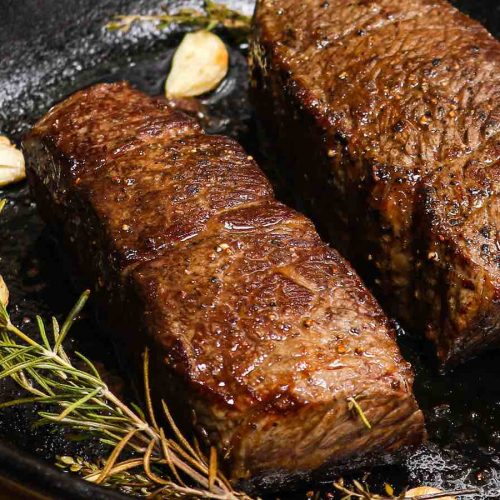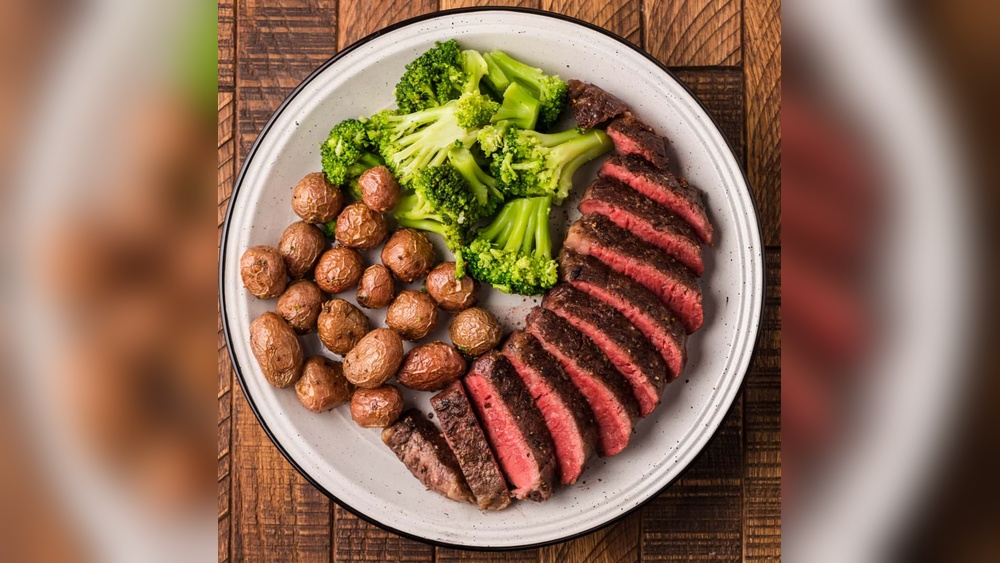If you’re craving a steak that’s juicy, tender, and full of flavor but won’t break the bank, Denver steak is your new best friend. This lesser-known cut comes from the shoulder area of the cow and surprises many with its rich marbling and melt-in-your-mouth texture.
But how do you cook Denver steak to bring out its best qualities? Whether you’re grilling, pan-searing, or trying a new marinade, mastering the cooking technique can transform this “hidden gem” into your go-to steak dinner. Keep reading to learn simple, effective tips that will help you cook Denver steak perfectly every time—your taste buds will thank you!
Denver Steak Basics
The Denver steak comes from the shoulder area of the cow. It is cut from beneath the shoulder blade bone. This cut is similar to flank steak but has a more even thickness. Its origin lies in the chuck primal, a less active muscle area, which helps with tenderness.
This steak has a rich flavor and a juicy texture. It is known for being tender and easy to chew. The meat has good marbling, which means thin lines of fat run through the muscle. This fat melts during cooking, adding flavor and keeping the steak moist.
| Feature | Description |
|---|---|
| Origin | From the chuck primal, under the shoulder blade |
| Flavor | Rich and beefy, enhanced by marbling |
| Texture | Juicy, tender, and easy to chew |
| Marbling | Moderate fat distribution for moistness |
| Tenderness | Fourth most tender muscle in the cow |
Choosing Your Denver Steak
Selecting quality meat is key for a great Denver steak. Choose steaks with a bright red color and firm texture. Avoid any meat that looks brown or feels sticky.
Understanding marbling grades helps pick flavorful steaks. Marbling means thin white fat lines inside the meat. More marbling gives juicier, tastier steaks. Look for USDA Choice or Prime grades for best marbling.
| Grade | Marbling Level | Flavor & Tenderness |
|---|---|---|
| Prime | High | Very tender and flavorful |
| Choice | Moderate | Good tenderness and flavor |
| Select | Low | Less tender, less juicy |
Pick a portion size that fits your meal. Denver steaks usually weigh 8-12 ounces. A 10-ounce steak is enough for one person. Thicker steaks take longer to cook but stay juicier.
Preparing Denver Steak
Marinating Denver steak helps boost flavor and soften the meat. Use a mix of olive oil, garlic, and vinegar for best results. Let it sit for at least 30 minutes but no more than 4 hours to avoid a mushy texture.
Tenderizing can be done by gently pounding the steak with a meat mallet. This breaks down tough fibers and makes the steak easier to chew. Be careful not to overdo it to keep the steak’s texture intact.
Seasoning Denver steak is simple. Use salt and pepper as a base. You may add garlic powder, smoked paprika, or fresh herbs like rosemary for extra taste. Apply seasoning evenly on both sides before cooking.
Cooking Techniques
Pan-searing helps seal the steak’s juices quickly. Use a hot pan and a bit of oil. Cook each side for about 3-4 minutes until a golden crust forms. This method keeps the inside tender and juicy.
Grilling adds a smoky flavor and a nice crust. Preheat the grill to medium-high heat. Cook the steak for 4-5 minutes per side. Avoid flipping too often to keep the crust intact.
Oven finishing is great for thicker steaks. After searing, place the steak in a preheated oven at 400°F (200°C). Cook for 5-7 minutes until the desired doneness. This ensures even cooking without drying out the meat.
Achieving Perfect Doneness
For medium-rare Denver steak, aim for an internal temperature of 130-135°F (54-57°C). Use a meat thermometer to check the doneness accurately. Insert the thermometer into the thickest part of the steak, avoiding bones or fat.
After cooking, rest the steak for 5-10 minutes. This step lets the juices redistribute, making the meat more tender and flavorful. Cover the steak loosely with foil during resting to keep it warm.

Serving Suggestions
Slicing Denver steak across the grain ensures each bite is tender. Cut thin strips against the muscle fibers to make chewing easier.
Pair Denver steak with simple sides like roasted vegetables, mashed potatoes, or a fresh salad. Classic sauces such as chimichurri, garlic butter, or peppercorn complement its rich flavor well.
For presentation, place the sliced steak neatly on a warm plate. Garnish with fresh herbs like parsley or thyme. Serve with colorful sides to make the dish look inviting.
Common Mistakes To Avoid
Overcooking Denver steak makes it tough and dry. Cook it just until medium rare or medium for best taste. Let the steak rest for at least 5 minutes after cooking. This helps the juices settle inside, keeping it juicy and flavorful.
Cut the steak by following the grain. Slicing against the grain makes the meat easier to chew. Ignoring grain direction leads to tough bites and less tender texture.


Frequently Asked Questions
What Is A Denver Steak And How Do You Cook It?
Denver steak is a tender, flavorful cut from the shoulder blade area. Cook it by pan-searing or grilling over high heat. Aim for medium-rare doneness and slice thinly across the grain to enhance tenderness and taste.
Are Denver Steaks Tender?
Denver steaks are tender due to their location in the less-used serratus ventralis muscle. They have excellent marbling, enhancing juiciness and flavor. Cooking quickly over high heat and slicing across the grain maximizes tenderness, making Denver steak a flavorful, affordable choice.
Is Denver Steak Good For Grilling?
Denver steak is excellent for grilling due to its marbling and tenderness. Grill quickly on high heat for best flavor.
How To Cook Denver Steak In A Cast Iron Skillet?
Heat cast iron skillet over medium-high heat. Season Denver steak with salt and pepper. Add oil, sear steak 3-4 minutes each side. Cook until medium-rare. Let rest 5 minutes. Slice thinly against the grain and serve.
Conclusion
Denver steak cooks quickly and tastes great with simple seasoning. Use medium-high heat for a nice sear. Let it rest a few minutes before slicing. Cut against the grain for tender bites. This steak offers rich flavor without extra fuss.
Serve with your favorite sides for a complete meal. Cooking Denver steak at home brings delicious results every time. Enjoy the juicy, tender taste with easy steps. Give this cut a try for a satisfying dinner.

